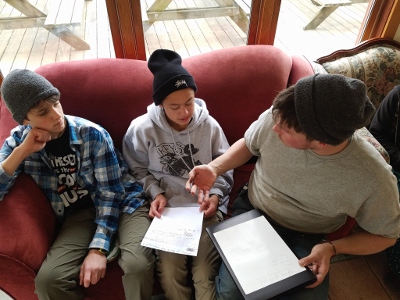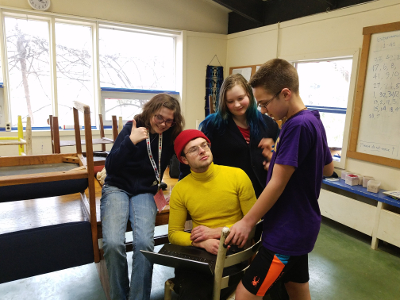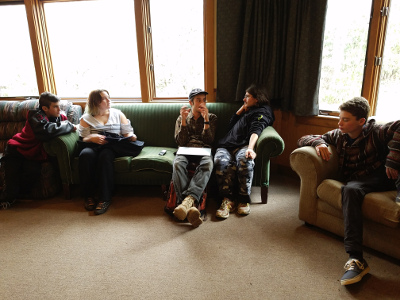Developing Decision Making Skills for Students

Getting students involved in governing their school is a pretty new concept. In the early 20th century, teaching the concept of democracy suddenly became a global concern. Student councils were one mechanism that emerged, inspired by the writings of John Dewey. Teaching students good decision making skills and involving them in the running of their school, whether it be through organizing social functions or education reform, was a huge part of Dewey’s vision.
Now about a hundred years later, students are still trying to figure out how to effectively make their opinions heard. Since Dewey, education has gone back and forth between the authoritative models to more progressive movements like free schools, where students choose what they learn.
Making Student Voices Heard
When Arthur Morgan School began, it sought to create a educational environment where students and staff collectively built their school. Through tools like All School Meeting and consensus decision making, AMS middle schoolers were given a real opportunity to implement change in their school community. They made decisions about activities, the daily schedule, and rules, much in the scope of Dewey’s original vision.

The idea worked. Students felt like they had a part in running AMS. They believed their voice made a difference and could make an impact on the community. For some, however, it wasn’t enough. Staff members wanted to put even more power into the hands of the students. They wanted them to feel empowered to make decisions about academics or how the school would spend its money on projects and activities.
With Great Power comes Great Responsibility
The problem was how to give the students more agency without putting important aspects of the school at risk. Middle schoolers are known to sometimes be rash. How could the school freely empower it students who might then turn around and terminate math class or spend the school’s money on some superfluous desire? The staff needed to instill the students with a strong sense of responsibility for the school’s future. They accomplished this through Committee Time.
Learn more AMS’s Student Governance System
Committee Time
Starting this year, every Monday students break off into committees for an entire hour. During that time, the students make decisions about certain areas of the school. The first step was to identify which committees they wanted to make. The committees now include:
- Student Activities: This committee brainstorms and plans fun field trips, outings, and service work/community involvement. Right now, they are working on eradicating multiflora rose from the cove so that students can start using the zip line again.
- Peace and Justice: They work to raise awareness among the students about who their legislative representatives are and how to contact them while also tracking local and global issues. Right now, they’re gathering the results from a questionnaire they’ve shared with students about what injustices they perceive on campus and in the world, and what they feel they can do about it as a student body.
- Charitable Giving: Organizes canned food and toy drives during the holiday season and writing letters to prisoners. This committee will also be part of deciding what do with the school’s charitable fund.
- Campus Improvement: Fixes and improves physical spaces on campus. They have already made efforts to increase the number of helmets and skate gear on the slab, bought capos and tuners for the meeting room, and now have their sights set on beautifying the treehouse hangout space.
- Public Art: Makes campus more beautiful by installing art. They are currently painting a mural in the Hopkins loft, where students have graffitied for generations. The mural intends to creatively incorporate some of the poems and quotes left by students over the years. This committee has some big ideas for the future including a sculpture garden.

Accountable Decision Making
These committees currently operate with staff sponsors who oversee their decision making process. These staff sponsors also spent the first couple months of the year teaching the student body as a whole about the importance of responsible leadership and different governing systems. The civics class laid the groundwork for the students to think about the ramifications of their decisions, not just in the immediate future, but for students many years from now.
Part of what makes committee time such a large success is that the students report back to one another. No matter what committee a student is on, they know what the other committees are doing thanks to committee reports given during All School Meeting. This reporting system makes the students accountable to one another and think about how their decisions will affect everyone in the community.
The hope for Committee Time is that it will continue to become more autonomous. As students become more practiced at making responsible decisions, staff hope to be less present during their meetings. They also hope to see them feel more empowered and take on heavier topics like building the school’s academic curriculum alongside their teachers or controlling a student fund that can be used to finance student projects. Whatever they decide to form committees about, the staff and students can feel confident they have the decision making skills necessary to keep the school’s best interests in mind.
-by Nicholas Maldonado
